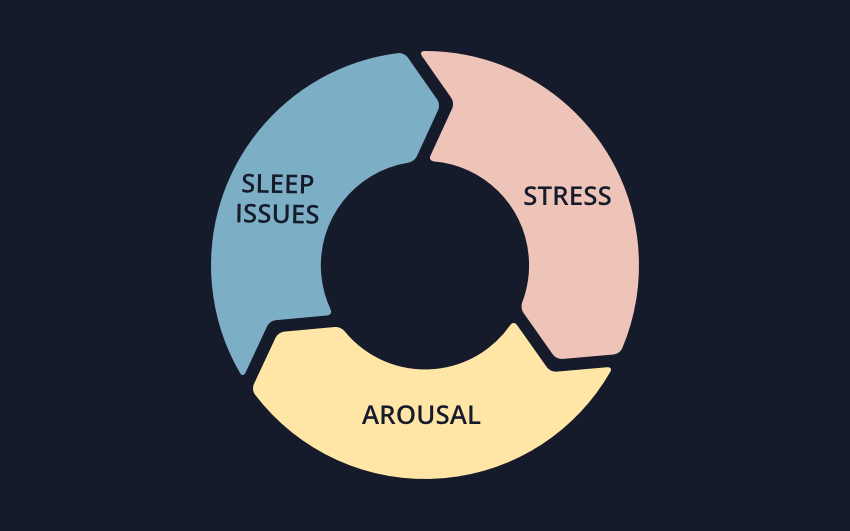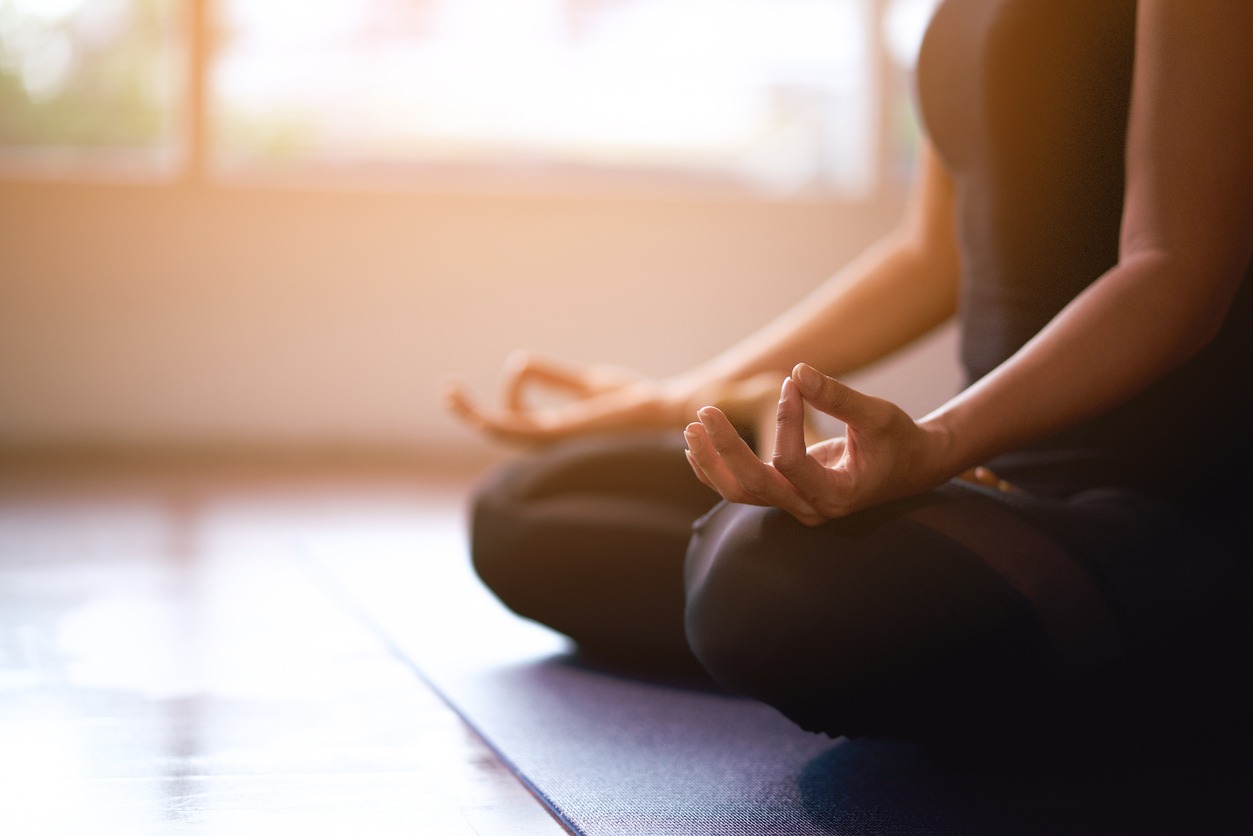Hyperarousal and how it affects sleep

Hyperarousal Overview
There’s one more process that can have an impact on when and how much we sleep, and that’s something called hyperarousal. Our bodies need a system to keep us safe when there are threats, so hyperarousal can override your whole system even when the sleep drive and circadian system are functioning well.
Imagine if you were a cave person sleeping peacefully and a saber-toothed tiger came by your cave. You want to be awake so you can protect yourself from the threat. These days, there are less saber-toothed tigers around but we still have hyperarousal. We are more likely to have hyperarousal in response to stressful life circumstances, or even just worries about the day or upcoming events. However, our bodies and brains don’t know the difference and treat these “threats” just like the threat of the saber-toothed tiger.
The vicious cycle
Stress serves as a trigger of a vicious cycle that impacts your sleep (see above):
1) Stress leads to physical arousal.
2) Physical arousal inhibits sleep.
3) Difficulty sleeping increases stress, and feeds into this vicious cycle.
Since stress can interfere with sleep, it is important for you to learn how to (a) prevent your body from getting tense at bedtime and (b) train your body how to truly relax your body. You should be able to reliably reduce your heart rate by now using one of the guided meditations. The SleepSpace app can give you feedback from your heart regarding how effectively you were at relaxing your body.
